"Should we advertise on TikTok?" "What about putting a spot on TV?" "I saw my competitor put up billboards, should we be doing that?" The truth is advertising isn’t simple. The beauty is, doing something is a step in the right direction. While there’s no cut-and-dry solution that will fit every business, there are some important things to understand when figuring out your advertising strategy.
Here’s where we always start the conversation:
1) What are your goals for this campaign?
2) Who are you trying to reach?
3) What is the desired outcome?
4) What are the budget parameters we should work around?
When we start with these, we can build a strategy around what platforms would be most effective when considering campaign goals and efficient when considering budget options. Putting weight to the different factors helps us come up with a plan that is unique for each client and each campaign.
The other thing to keep in mind is the creative development cost that goes into each campaign. For example, a video might drive the best brand message awareness and reach on CTV and local television, but there might be new video production costs to create the spot. Factoring in creative development is part of the conversation when planning a new campaign.
Let’s break down the different factors.

Not all campaigns are built the same. For example, launching a new product or service without introducing it to the market and investing all your ad dollars into conversion-based campaigns usually leads to lackluster results.
Campaign goals closely match up with how you would think of a traditional sales funnel:
1) Awareness - introducing the brand, product, or service to the market
2) Prospecting - qualifying potential customers
3) Retargeting - focusing on frequency with messaging to targeted individuals
4) Education - answering FAQs and addressing pain points with targeted individuals
5) Conversion - creating a strong hook and CTA to drive sales, usually offer-based
Identifying who the campaign is trying to reach is key to not only creating and crafting the message but also identifying the best platform and settings for your campaigns.
Not all campaigns should revolve around sales. A healthy campaign is balanced addressing the different points of a sales journey with customers. But desired outcomes can also look like referrals, a higher rate of returning on existing customers, establishing brand values, creating brand stickiness, reinforcing brand market share, or even just introducing the brand to a wider audience.

Knowing how much you want to invest and over what length of time will also give structure to what is the best move for your business to reach those goals. Different platforms have different costs associated with them. While the best approach is having a diversified platform strategy that integrates multiple channels, that’s not always realistic for small businesses.
But what about available channels? How do you know when to place a social ad versus a billboard? While there’s more to it, here’s some simple pros and cons to each:
Pros: high visibility/reach, cheaper on a Cost per Impression basis, good plays for awareness & equity, geographic targeting
Cons: no way to track engagement, hard to track results from boards, not a great play for call-to-actions, no demographic targeting
Pros: high frequency, cheaper on a Cost-per-Impression basis, higher engagement with audience, strong for awareness and brand equity, geographic targeting
Cons: little ability to track engagement or results of ads, no demographic targeting
Pros: great for building brand equity and reinforcing brand value with publications catered to target audiences
Cons: can be more expensive, hard to track results
Pros: build brand equity, strong for brand awareness, better engagement, strong Cost-per-Impression efficiency, good for geographic targeting
Cons: hard to track results, larger budget required, lack of demographic targeting
Pros: scalable budget, advanced audience targeting, effective on a Cost-per-Impression basis, high engagement
Cons: hard to track results
Pros: high target ability with audience settings, can set campaign goals for different objectives, scalable budget, easier to track results from ads
Cons: disruptive ads on a social feed can hinder desired call-to-action, higher thought into messaging and creative is needed to drive effective results
Pros: can target individuals already searching for the solution your product or service offers, can also target people searching for your competitor
Cons: placements are based on an auction system, so desirable placements may be expensive
Pros: high placement on Google search results, good for market positioning against competition
Cons: expensive placement and results

Each business will have different needs but even more importantly, opportunities to find a creative solution to help it stand out from its competition. Ultimately, what you’re looking for is finding the unique angle no one else is attacking to gain market share, reach your desired audience, and achieve your campaign goals to help your business grow.